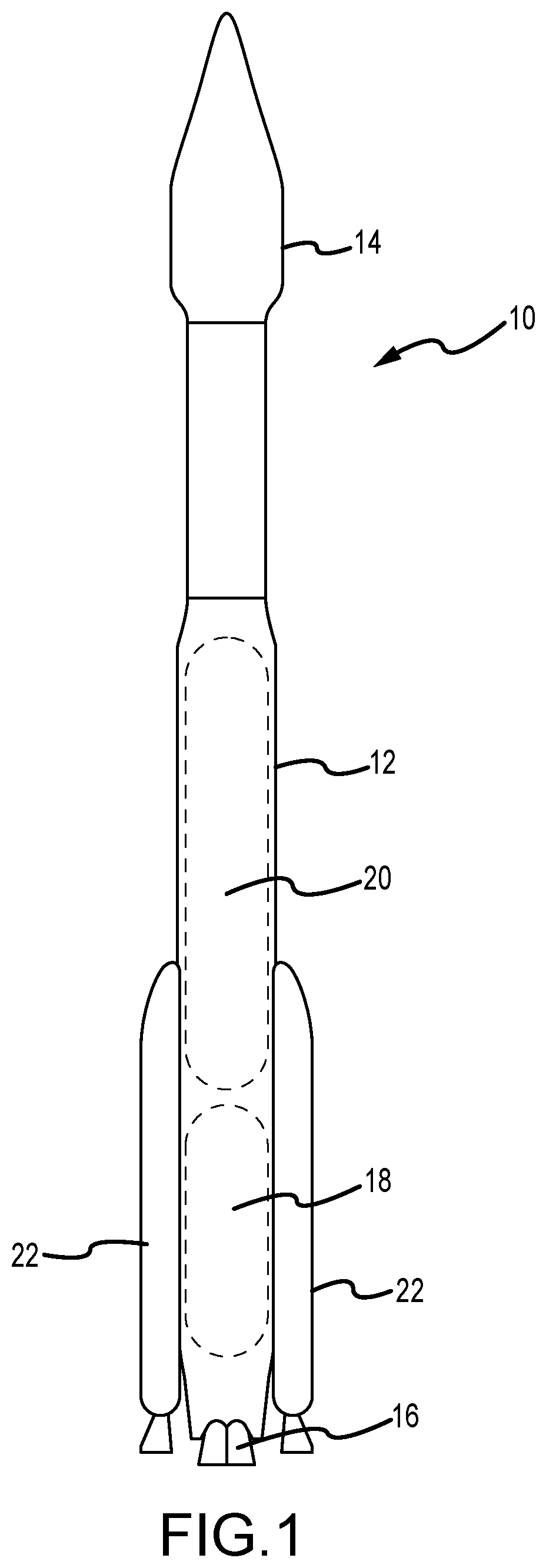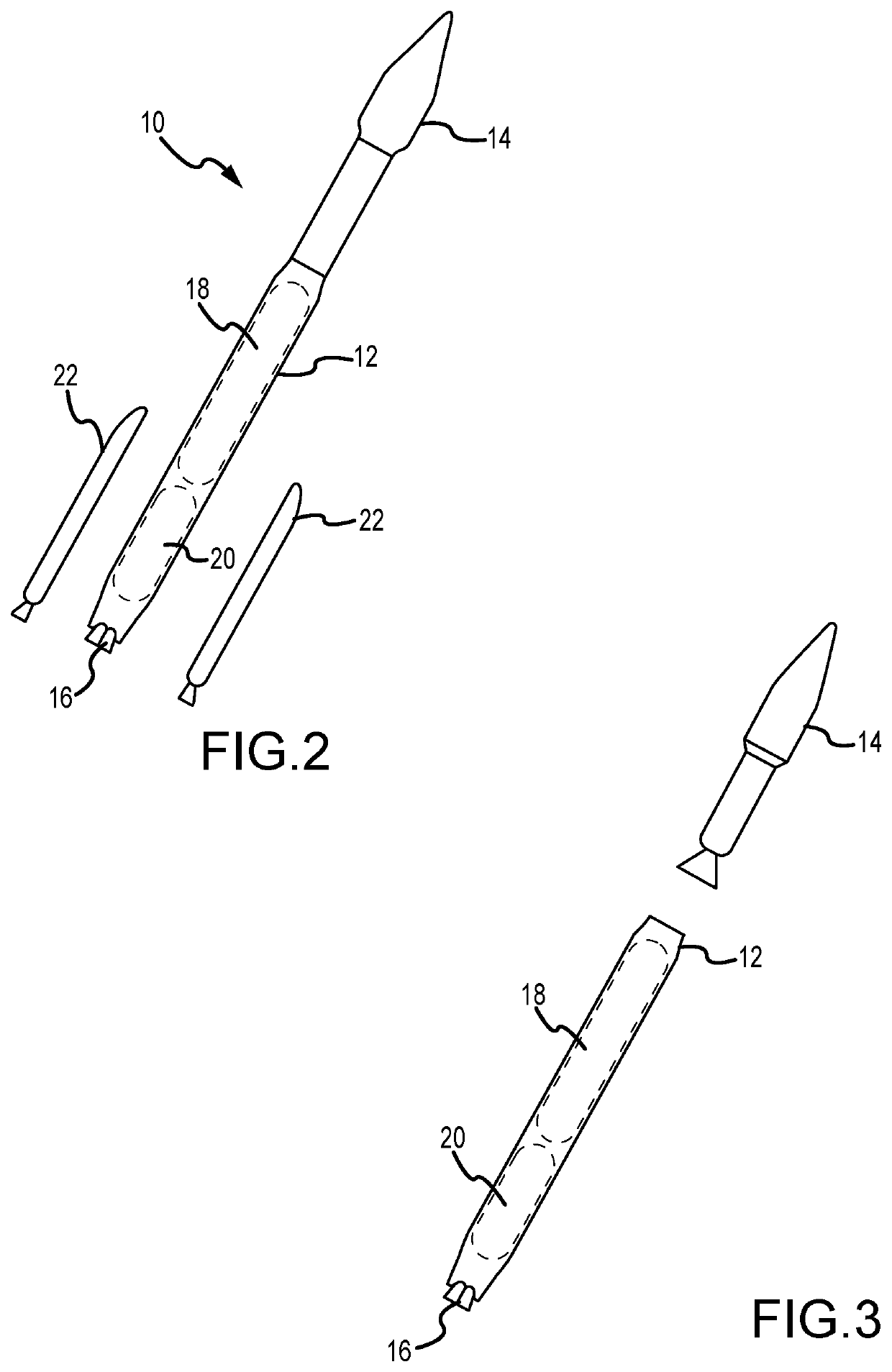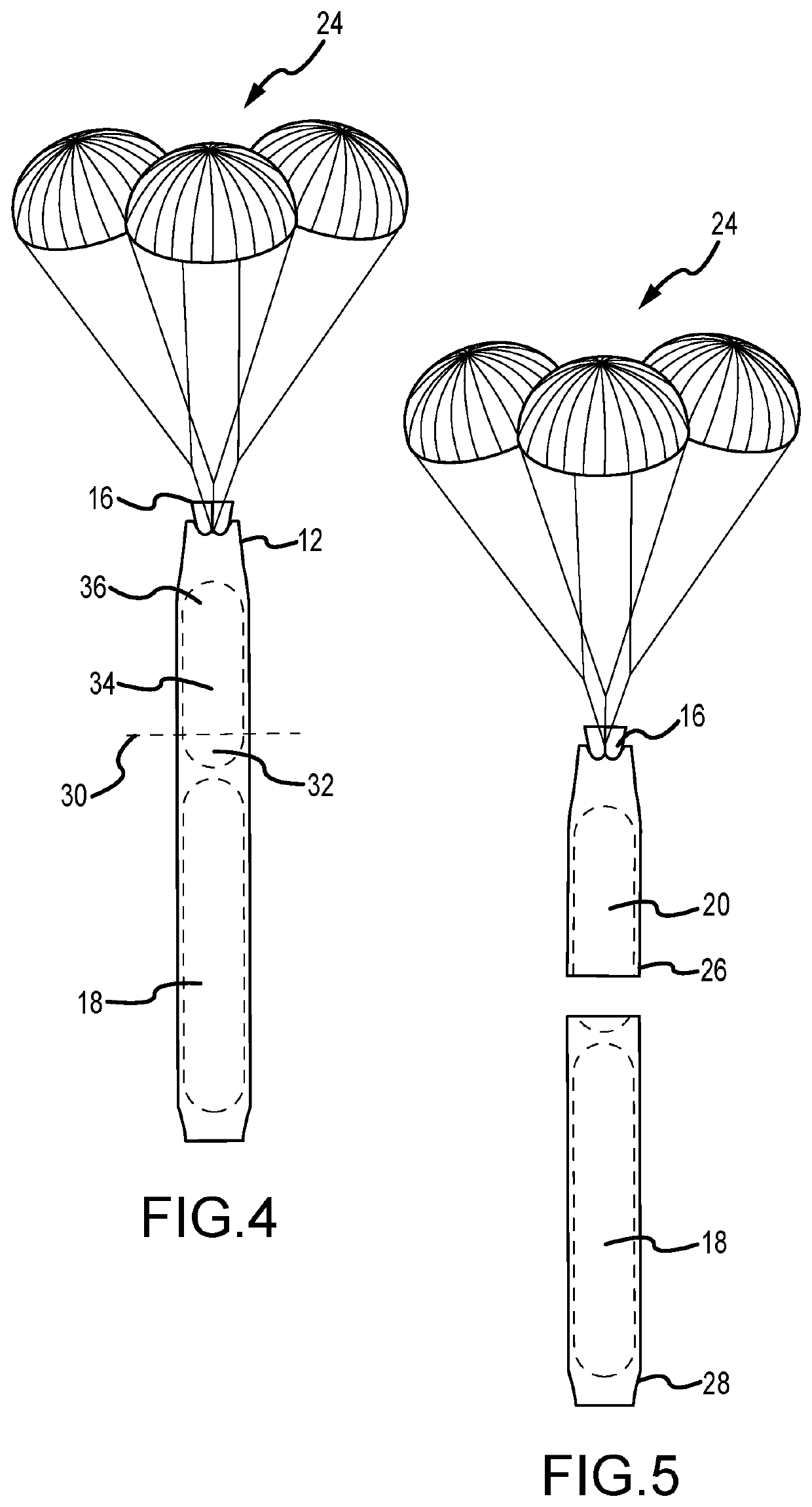Self-preserved amphibious landing of space hardware
a space hardware and amphibious technology, applied in the field of amphibious landing hardware recovery, can solve the problems of high cost of launch vehicles, inability to realize anticipated savings from reuse, and increased costs of additional systems, including propellant and guidance hardware, so as to slow down the first section and reduce weight
- Summary
- Abstract
- Description
- Claims
- Application Information
AI Technical Summary
Benefits of technology
Problems solved by technology
Method used
Image
Examples
Embodiment Construction
[0029]Those of skill in the art will recognize that the following description is merely illustrative of the principles of the invention, which may be applied in various ways to provide many different alternative embodiments. This description is made for illustrating the general principles of the teachings of this invention and is not meant to limit the inventive concepts disclosed herein. The detailed description is to be construed as exemplary only and does not describe every possible embodiment since describing every possible embodiment would be impractical, if not impossible. Numerous alternative embodiments could be implemented, using either current technology or technology developed after the filing date of this patent, which would still fall within the scope of the claims.
[0030]Turning to FIG. 1, an exemplary launch vehicle 10 is illustrated. The launch vehicle has a first stage 12 and a second stage 14. The main engine 16 is located at the bottom of the first stage 12 as the ...
PUM
 Login to View More
Login to View More Abstract
Description
Claims
Application Information
 Login to View More
Login to View More - R&D
- Intellectual Property
- Life Sciences
- Materials
- Tech Scout
- Unparalleled Data Quality
- Higher Quality Content
- 60% Fewer Hallucinations
Browse by: Latest US Patents, China's latest patents, Technical Efficacy Thesaurus, Application Domain, Technology Topic, Popular Technical Reports.
© 2025 PatSnap. All rights reserved.Legal|Privacy policy|Modern Slavery Act Transparency Statement|Sitemap|About US| Contact US: help@patsnap.com



